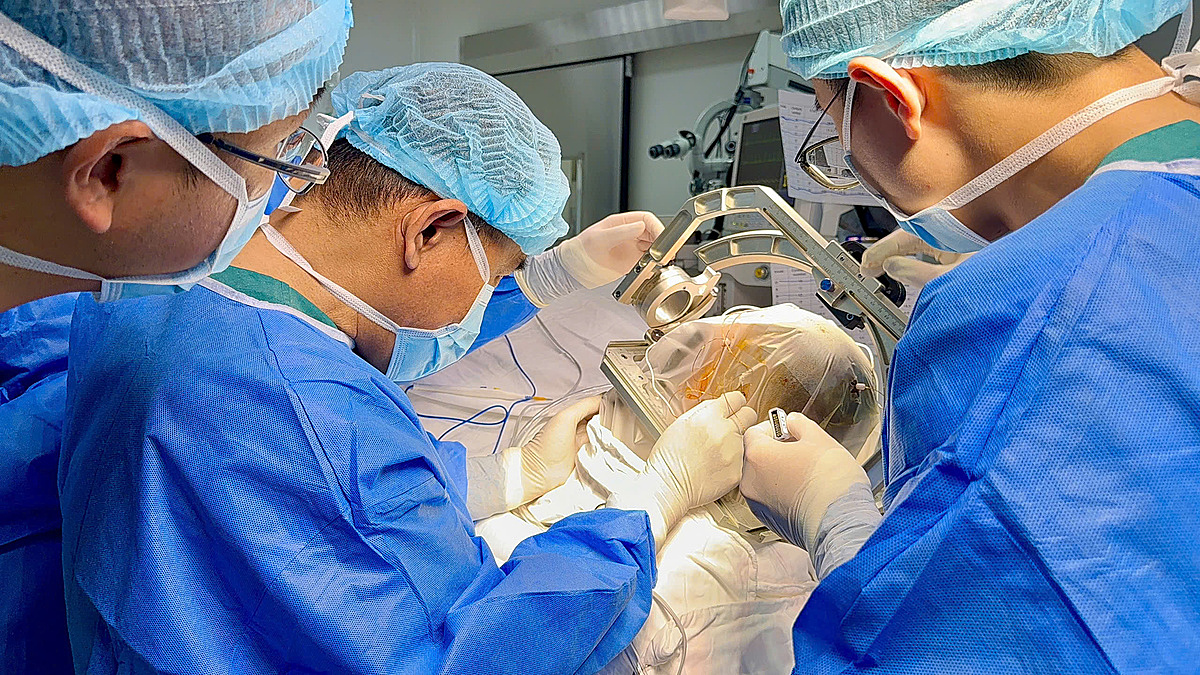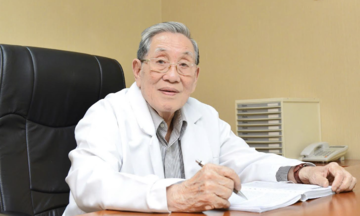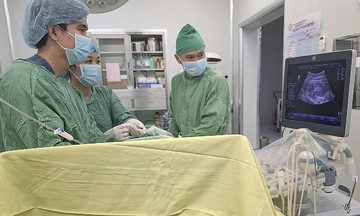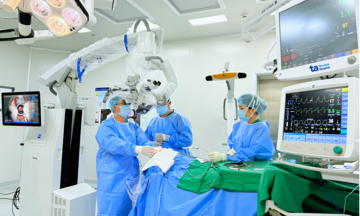Doctor Pham Anh Tuan, head of the neurosurgery department, reported on 12/9 that the 10th-grade student had been experiencing 2-3 seizures weekly despite treatment at various facilities and using three anti-epileptic medications. An MRI scan revealed abnormalities in the left temporal-occipital region of her brain, but the precise location of the epileptic focus remained unclear. A scalp electroencephalogram (EEG) suggested the seizures originated in the left temporal lobe, but it wasn't precise enough to guide surgery.
"The temporal lobe is involved in crucial functions like memory, language, and visual and auditory processing – essential for the patient's learning and daily life," Dr. Tuan said. Therefore, the medical team needed to pinpoint the exact seizure origin to remove it while preserving as much brain function as possible.
The doctors consulted and decided to use stereoelectroencephalography (SEEG). Doctor Le Thuy Minh An from the neurology department explained that SEEG is a highly advanced, minimally invasive technique that allows precise localization of the seizure onset zone and mapping of brain functions.
According to Dr. Tuan, without SEEG, the patient would have continued to live with drug-resistant epilepsy. Meanwhile, "blind surgery" based solely on MRI scans is less effective in controlling seizures and carries the risk of removing too much brain tissue, causing permanent neurological deficits. Studies have shown that surgery guided by SEEG improves seizure control by 40-60% compared to traditional lesionectomy alone.
After implanting the electrodes and analyzing the continuous EEG recordings, the surgical team identified a smaller epileptic focus than the lesion shown on the MRI. This allowed them to perform a safe resection, preserving as much brain function as possible. Two weeks after the surgery, the patient has not experienced any further seizures and remains under post-operative observation.
 |
Doctors performing surgery on the epilepsy patient. Photo: Provided by the doctors |
According to Doctor Le Cao Phuong Duy, deputy director of the hospital, this success is the result of international collaboration and learning, paving the way for advanced treatment of neurological conditions like epilepsy and Parkinson's disease. The hospital recently hosted an international conference on the application of SEEG in epilepsy surgery, marking the first time this technique has been implemented in a public hospital in Vietnam.
In Vietnam, epilepsy affects approximately 0.5-1% of the population, which translates to 500,000-1,000,000 people. Nearly 30% of these cases are drug-resistant, requiring specialized interventions. Each year, the neurosurgery department at Nguyen Tri Phuong Hospital receives hundreds of drug-resistant epilepsy cases of all ages, including those who have undergone treatment elsewhere without success.
Le Phuong












